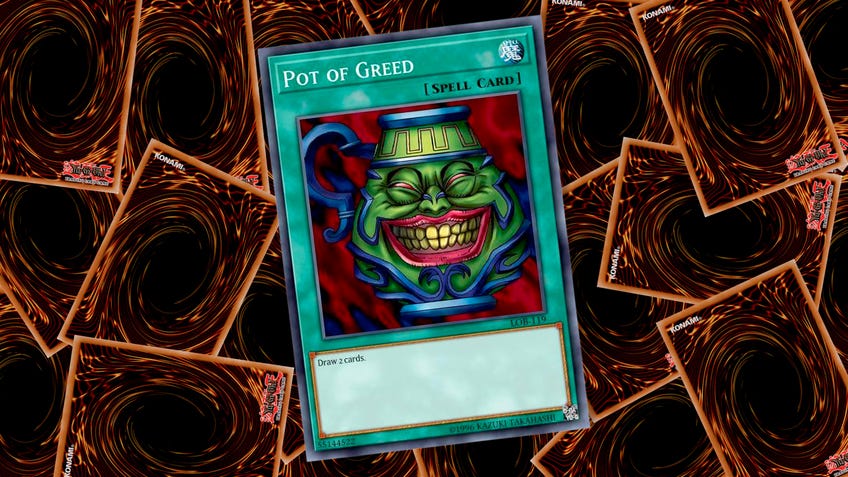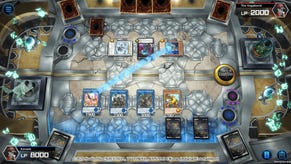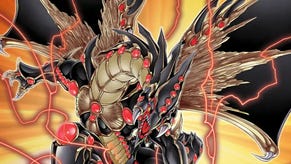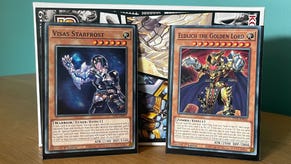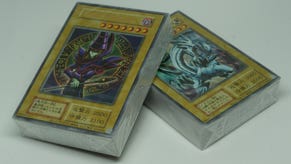Pot of Greed: The game-breaking card that changed Yu-Gi-Oh! history
Three little words.
Within the last 25 years Yu-Gi-Oh! has developed and grown to become one of the most popular card games on the planet. This is thanks to Konami’s relentless drive to push the game forward with merchandising deals, tournaments and spin-off anime, as well as producing over 10,000 cards and multiple new in-game mechanics. Yet, even with all this innovation and development, one card still stands out as the game’s most infamous. Not Yugi Moto’s beloved Dark Magician, not even Seto Kaiba’s imposing Blue-Eyes White Dragon. An innocuous spell card: Pot of Greed.
Pot of Greed is a card emblematic of Yu-Gi-Oh!, and has subsequently been woven into the very fabric of the game and its multiple spin-offs. So, what is the Pot of Greed? Why was it banned? What has made it so notorious? And how did Konami reinvent Pot of Greed to become its own archetype of card?
First, we must ask the obvious question: what does Pot of Greed do?
Pot of Greed allows you to draw two cards. That’s it. It’s as simple as that. By all accounts, this card is incredibly boring. In many trading card games, there are cards that have similar effects. In Magic: The Gathering, for example, the sorcery card Divination allows you to draw two cards. Divination is perfectly legal within all of MTG’s formats. But Pot of Greed was placed on Yu-Gi-Oh!’s limited ban list for the very first World Championships in 2003, and by October 2005 it found itself on the forbidden list alongside other more obviously powerful meta spells of the day like Harpy’s Feather Duster, Raigeki and Change of Heart.
To understand why such a seemingly innocuous card got bonked by the ban hammer, we need to understand Yu-Gi-Oh!’s unique card economy system.
When summoning cards in games like Magic: The Gathering, players need to meet the card’s casting cost. In MTG, that’s the amount of mana a card needs for it to be summonable. Mana is generated by having the correct coloured “land” cards in play. So, to even play Divination, a player would already need at least three land cards in their mana pool to activate the card. With a casting cost mechanic, the most powerful cards in your deck are only as useful as the amount of land you have. Drawing two cards doesn’t guarantee you will get land; it offers the chance to get land, but without that guarantee, it’s a matter of luck - and, even if you did draw a land, you can typically only play one land per turn. This is why cards like the notorious Black Lotus, which allowed a player to add three mana directly to their mana pool - thus massively increasing their summoning potential instantly - were banned but card draws are not.
Being able to draw the cards you need without repercussion, in a game system devoid of any casting costs or required material costs, is game-breaking.
In Yu-Gi-Oh!, there isn’t a casting cost mechanic. Not in the same way as there is in Magic, anyway. Spell cards and trap cards can be set and played freely. Any monster under level 4 can be immediately summoned. Though players are limited to one normal summon per turn, the card effect chain of Yu-Gi-Oh! is such that this one summon can easily cascade into multiple special summons, which are unlimited. So having a card that will allow you to just add cards to your hand, with no repercussions and, at the time, no counterability, is incredibly powerful. To see why let’s do some maths.
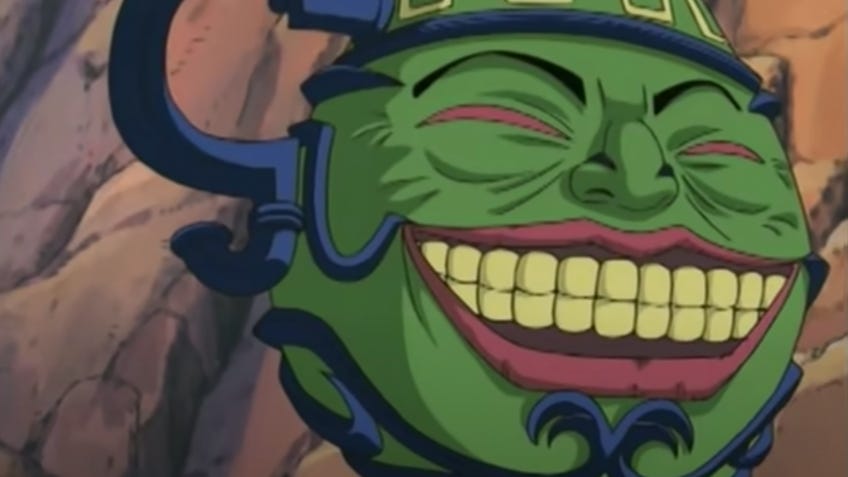
Yu-Gi-Oh! deck sizes are limited to 40 to 60 cards for the main deck. (There was a time when there was no maximum limit, which swiftly changed after someone entered a German tournament with a 2000+ card deck.) A tournament deck will always be 40 cards because the fewer cards you have, the more likely you are to draw the ones you want. In most decks, players will have three copies of each card they want within the deck, provided that said card is not limited in any way. So at the beginning of a game when the player draws their initial five-card hand, a player has a 33.76% chance of drawing a desired card straight away.
What Pot of Greed effectively does is reduce your deck size down from 40 to 37, as you draw two cards alongside the Pot of Greed. This means that if you were to draw a Pot of Greed in your opening hand - something that the players of the 2003-2005 World Championships had a 12.5% chance of doing, as it was limited to a single copy per deck - your hand size increased from five to six and your deck size reduced down to 37, increasing your chances of drawing a specific card from 33.76% to 42.15%. Even if the desired card wasn’t pulled then, you effectively had two additional drawing turns versus your opponent, with each subsequent draw phase increasing your chances of drawing that wanted card.
Though Pot of Greed is comparable to how disruptive other forbidden Yu-Gi-Oh! cards can be, being able to draw the cards you need without repercussion, in a game system devoid of any casting costs or required material costs, is game-breaking.
There are hundreds of forbidden cards in Yu-Gi-Oh!, so what makes Pot of Greed so iconic?
In 2014, a YouTuber going by the handle “Wheeler” (presumably a nod to Yu-Gi-Oh!’s own Joey Wheeler) noticed a trend within the original Yu-Gi-Oh! anime run. Anytime a character used Pot of Greed, they would explain what the card does. This would have been absolutely fine if it wasn’t for the fact that pretty much every character in the show had a copy of Pot of Greed and played it almost every week. This subsequently birthed the following copypasta to answer the frequently satirised question “but what does Pot of Greed do!?”:
Pot of Greed became the card that both die-hard fans and casuals alike saw as the unofficial mascot of the game.
“POT OF GREED ALLOWS ME TO DRAW TWO MORE CARDS. I WILL START MY TURN BY PLAYING POT OF GREED WHICH ALLOWS ME TO DRAW TWO MORE CARDS. I WILL PLAY THE MAGIC CARD, POT OF GREED, WHICH ALLOWS ME TO DRAW TWO NEW CARDS.”
Once Pot of Greed became a meme, its place within the pantheon of internet stardom was cemented. As Konami continued to iterate on the game, adding more and more cards and continuing to build Yu-Gi-Oh! as the biggest card game on the planet, Pot of Greed remained the card that both die-hard fans and casuals alike saw as the unofficial mascot of the game.
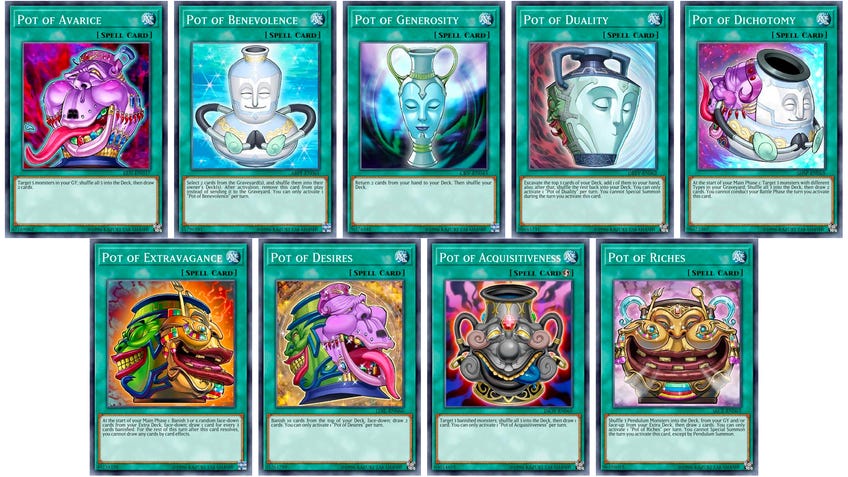
Over the last 17 years since Pot of Greed was placed on Yu-Gi-Oh!’s forbidden list, we have seen most of those originally forbidden spell cards make a return in some shape or form. Even the most egregious examples, like the monster-stealing Change of Heart and the monster-annihilating Raijeki, have been moved from the forbidden list onto the limited list. But Pot of Greed hasn’t, nor will it return to the main game.
The reason why is, unlike any other spell card on the forbidden list, Pot of Greed paved the way for a whole series of iterations and variations, known as the 'Pot of' series. As of the time of writing, there are now nine 'Pot of' variations which can credit their roots to Pot of Greed. All of these cards are much more interesting than Pot of Greed, making the player either tailor their deck structure around the Pot or adding a much-needed element of risk to playing the card.
For example, the Pot of Extravagance allows you to draw up to two cards if you banish three to six random cards from your Extra Deck. As most meta decks rely on the Extra Deck for special summons, the Pot of Extravagance is too risky to play. If you’re running a deck that doesn’t rely on the Extra Deck, like the budget deck Ultra Athletes, banishing three to six cards is no problem. Pot of Desires instead lets you draw two cards if you banish the top 10 cards of your main deck - a massive risk to reward paradigm that could result in pulling the desired card or banishing it for the entire game.
What Konami did with Pot of Greed was brilliant. It iterated on the initial premise of the card and expanded it out, making its very mundane card draw mechanic a make-or-break moment for a game of any level. For all its goofiness and historical influence on the game, the original Pot of Greed is surplus to requirements.
Pot of Greed’s legacy has been woven into the fabric of Yu-Gi-Oh! Though we will never be able to slam that green jar onto our spell zone, explaining with joy that we can now draw two new cards, its infamy will live on through the much more interesting 'Pot of' series and the internet notoriety it has gained along the way.
